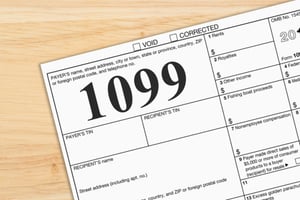Top 3 Things Small Businesses Can Do to Make Tax Time Easier

Most small business owners and managers aren’t exactly thrilled to deal with their taxes. It’s often a tense time with plenty of extra work and, quite possibly, some unpleasant surprises. As companies grow, their tax problems grow even faster, and small mistakes can quickly grow into a threat to survival.
The IRS likes to work with new small businesses to correct minor mistakes, but their sympathy quickly dries up as you gain experience and scale-up. You’re expected to know in advance how tax laws impact your company – especially once you start onboarding more employees or hire contractors. Fortunately, a little targeted preparation can save you tons of time and a great deal of money. Here are the top 3 things businesses should consider ahead of time to make tax time easier – and less painful for your wallet.
1. Spend down at year’s end
One of the key methods used to alleviate taxes is to spend your profits. As the end of the year approaches, you’ll have a better idea of tax liability, and there can be major benefits to lowering your taxes, such as falling into a lower bracket. Plus, you can take advantage of year-end sales as well as credit programs the IRS or individual states offer that may expire the following year. These factors can magnify the benefits of spending as the tax year closes.
There are plenty of examples of items that are great for year-end spending. Issuing bonuses to your workers is a fantastic method to reduce taxes, they appreciate holiday bonuses, and retain your best talent. You can contribute to charities, upgrade computer systems or buy new software. Also, some health benefits, such as annual physicals, will disappear on December 31st, so don’t hesitate to use those up.
Besides spending, another established method of reducing taxes is to push income to the next year. Many clients won’t mind (or even notice) if your invoices are a little delayed, so unless you know they are particular about receiving prompt bills, don’t be afraid to send the bill at the end of December or even January of next year. However, this only works if you use the cash method of accounting, which records income and expenditures when actual payment is sent or received. If you use accrual accounting, you’ll record the spending or revenue when your business receives or delivers goods and services.
Another great idea is end-of-year deals for your customers. If you’re close to lowering your marginal rate, you can improve customer relations by giving them a lower cost, reducing your tax burden in the process. It’s beneficial to offer initial deals for ongoing services or recurring charges, so bear that in mind.
The IRS offers bonus depreciation for tax years through 2027, which means you can write off more than the typical 50% of many major purchases. Through the tax year 2022, you can (if you wish) write off up to 100% of the purchase, with decreasing bonuses through the years. The program is set to end with a 20% bonus in 2027.
2. Pay attention to changing federal and state tax laws
Tax laws and IRS rules can change yearly. For instance, the American Rescue Plan Act radically changed the threshold that triggers a 1099-K, going from $20,000 aggregate payments down to $600 and eliminating the minimum number of transactions. Plus, each state has its own system, which also changes frequently, so you’ll need to know the laws in every state where you have workers or do business. When you have employees in more than one state, scaling up can quickly become a twisted mess of constantly changing laws. It’s wise to pay some attention to business news headlines and note those that may impact you.
Also, sales tax laws have radically changed. Previously, you had to have a physical presence in a state before they required tax collection, but in South Dakota v. Wayfair, the Supreme Court decided to eliminate the physical requirement. Now, each state can set a threshold for how much revenue and transaction numbers constitute a nexus. This catches many by surprise and can result in hefty fines if you haven’t heard about it. However, if your business uses third-party delivery apps to deliver your goods, be advised that determining who is responsible for collecting the tax can be difficult.
3. Stay organized
Nothing else will help make tax time easier than having all your records well-organized. If you’re using a shoebox for receipts and trying to balance your books in Excel, you’re throwing away tons of time and money. With the rise of technology, it’s imperative to use modern software for accounting and paying your workers. Use a top-tier payment and compliance software provider to handle payments to contractors and all their tax forms, along with good accounting software designed for small- to mid-size businesses to stay ahead of the curve.
Always use software that stays current with laws in every state you do business, making compliance and record-keeping quick and straightforward. It should have a simple interface that’s designed to automate payments and create, submit, and get approval for 100% of your worker’s tax forms. You should be able to easily scan your receipts in your accounting software, too, although it’s a good idea to keep hard copies as well when practical.
If you decide to switch banks or accountants, the ideal time is January 1st – or whenever your fiscal year rolls over. It can dramatically simplify your paperwork, especially if your fiscal year ends on December 31st, as well. You should also keep your personal account and business account separate. If you’re still using your personal account to pay business expenses, it can confuse what is and isn’t a legitimate tax deduction.
A little organization, good software, and well-targeted spending can help grow your business while making tax time much less stressful – and substantially cheaper, too. Gig Wage makes this all easy and quick.
Written by
Gig Wage


